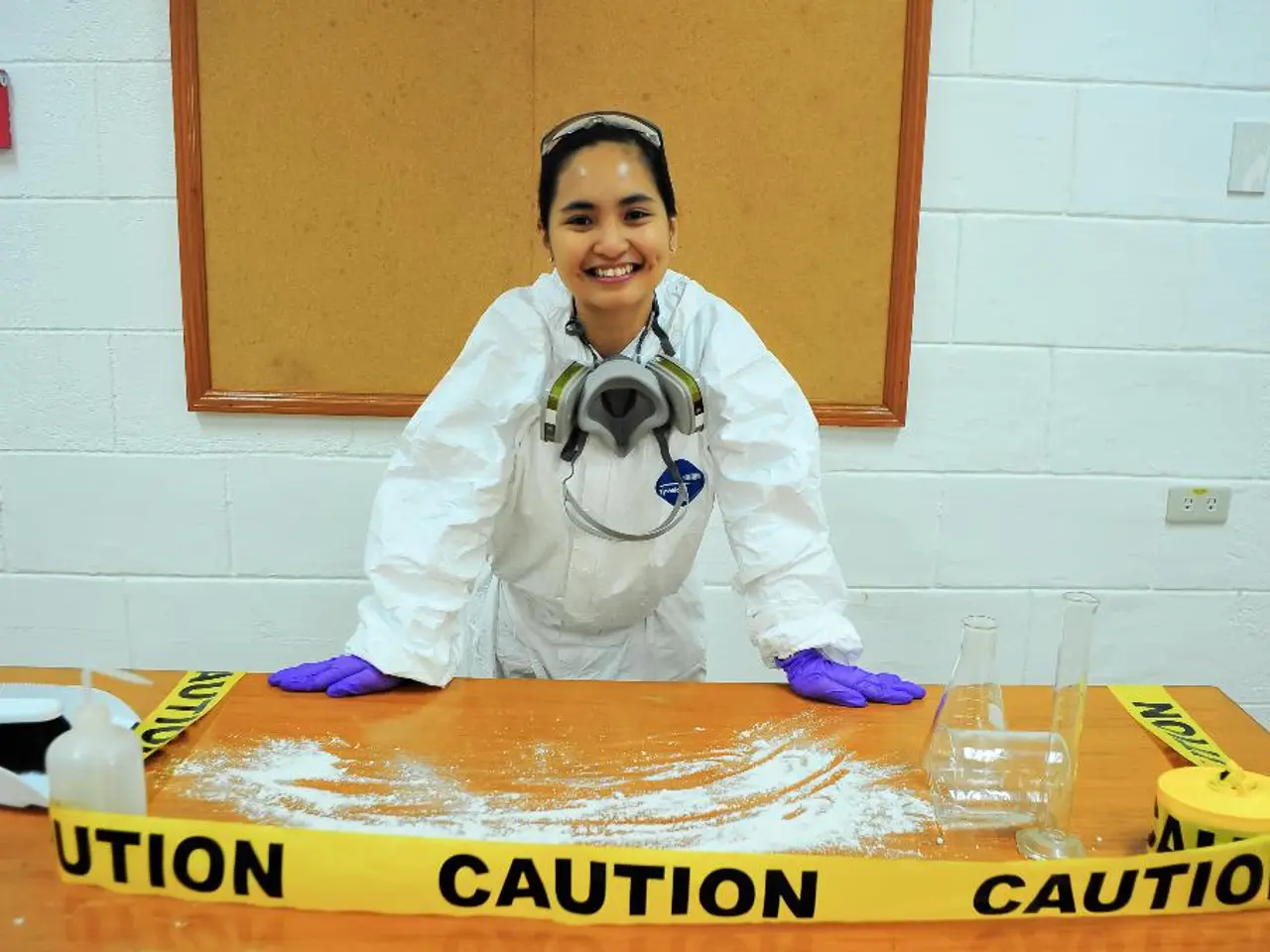A momentary lapse in recall of verbal expressions
=======================================================================================
In the realm of chemistry education, teaching students learning in a second or third language presents unique challenges. However, with a multi-faceted approach, educators can create an inclusive and engaging learning environment that supports students in their journey.
Visual Aids and Graphic Organizers
Incorporating visual aids such as diagrams, charts, and the Periodic Table can significantly aid in bridging language barriers. These tools help students visualize complex concepts, making them more accessible[1]. Graphic organizers can also facilitate the organization of information, illustrating relationships between different components of a chemical process.
Practical Experiences and Active Learning
Engaging students in hands-on experiments and activities allows them to explore chemical principles practically. This approach reinforces theoretical understanding and provides a tangible connection to abstract concepts[2]. Utilizing virtual simulations and 3D models can enhance comprehension by allowing students to manipulate chemical reactions and structures interactively.
Communication and Feedback
Clear, concise explanations delivered at a pace that allows students sufficient time to absorb and process the information are crucial. Regular feedback mechanisms should be implemented to assess students' understanding and address any misconceptions promptly. This can involve peer-to-peer discussion, group projects, or one-on-one sessions.
Connecting to Prior Knowledge
Connecting new chemistry concepts to students' existing knowledge can help reinforce learning. For example, when teaching organic chemistry, highlighting how certain reactions are similar to those they've learned about in other areas of chemistry can aid comprehension[3].
Inclusive Strategies
Fostering a learner-centered environment by increasing learner agency, allowing students to take an active role in their learning process, can be particularly beneficial for students requiring additional language support[4].
Case Study: A Chemistry Journey
An individual, in their pursuit of improving the production process of rotaxanes for future applications, managed some scientific explanations and a few extra control experiments to get useful electrochemical data points. Along the way, they gained valuable knowledge about certain molecular structures that should not be demonstrated with impromptu hand gestures during presentations.
Initially, language confusion intensified recall as the individual now uses these terms routinely. The act of routinely applying skills can make one forget that they once had to be taught them with their terminology. The individual's lab partner saved them from language misunderstandings and repeated titration experiments.
Writing results in a second language can be challenging, as previous experience in the first language can be a barrier. The individual took an open unit in chemistry in Japanese while doing an advanced language course to take up a job abroad.
In teaching students learning in a second or third language, oversimplifying from the outset should be resisted. Bidirectional verbal communication remains essential, but students show understanding through facial expressions, eye movements, and hand gestures. Escaping questioning through nodding and smiling can be appealing to students under pressure.
However, students may not realize that their groupmates are control variables in class and monitoring progress. Hand gestures do not necessarily mean one is speechless, even if an audience may briefly be.
In this case, the individual learned a simple demonstration of adiabatic pressure changes using a PET drinks bottle and a dropping pipette. Qualitative test tube reactions can be understood with an unfamiliar chemical system, while titrations may be familiar but potentially misleading.
By integrating these strategies, educators can create an inclusive and engaging chemistry learning environment that supports students learning in a second or third language.
[1] Kozma, R. B., & Russell, L. A. (1997). Visualization and the revision of a science textbook for English language learners. Cognition and Instruction, 15(1), 1-35. [2] Mayer, R. E. (2001). The theory of multimedia learning. Educational Psychologist, 36(1), 43-52. [3] Chi, M. T. H., Bassok, M., Lewis, M., Reimann, P., & Glaser, R. (1989). Self-explanations: How students study and use examples in learning to solve problems. Cognitive Science, 13(2), 145-182. [4] Bransford, J. D., Brown, A. L., & Cocking, R. R. (1999). How people learn: Brain, mind, experience, and school. Washington, DC: National Academy Press. [5] Paas, F., Renkl, A., & Sweller, J. (2004). Learning styles: Concepts and evidence. Psychological Science in the Public Interest, 5(3), 101-119.
- In health-and-wellness, language barriers can be overcome by incorporating visual aids like diagrams, charts, and the Periodic Table, which can help non-native speakers visualize complex concepts and facilitate learning.
- Fitness-and-exercise programs can promote personal-growth and learning by using practical experiences and active learning methods, allowing students to explore principles hands-on and reinforcing theoretical understanding through tangible connections.
- Education-and-self-development can benefit from inclusive strategies such as fostering a learner-centered environment, connecting new concepts to prior knowledge, and implementing regular feedback mechanisms, which support students learning in a second or third language.




